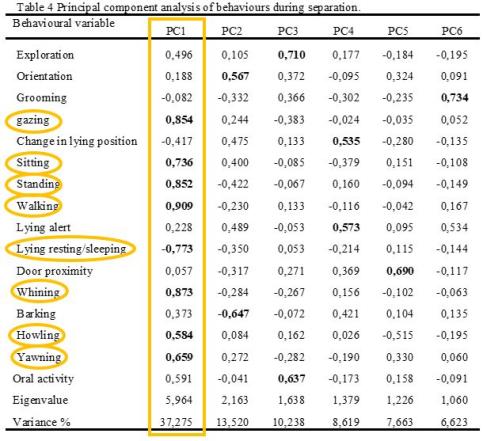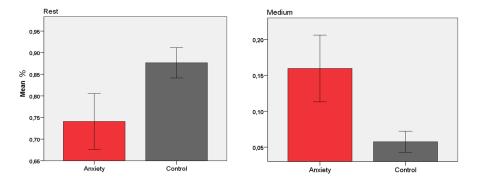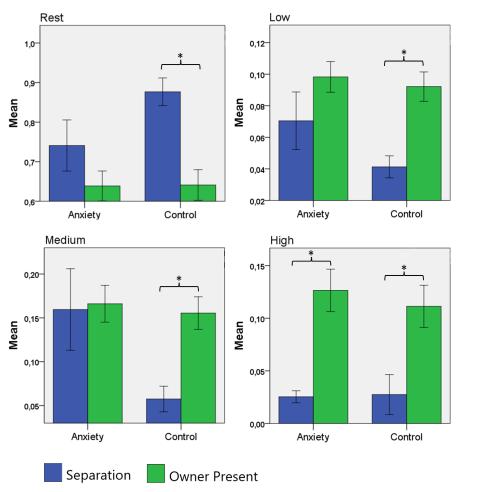Results
Behaviour - principal component analysis

After data collection and coding I did two principal component analysis. One for separation behaviours and one for reunion behaviours. There was only one were significantly different component between the two groups. Component one from the separation behaviours with the following behaviours.
- Gazing
- Locomotive behaviours
- Vocalization
- Restlessness.
A Wilcoxon signed-rank test showed that the dogs with separation anxiety performed these behaviours more compared to control dogs (Z = -2,121 p = 0,034)
Hair cortisol
In hair cortisol I found:
- No differences between the groups
- No correlations to separation anxiety
Activity
I looked at the activity in 4 different situations.
- Separation
- Owner present
- A day with separation
- A day with no separation
And in two ways
- between groups
- within groups

Between groups
Separation
When comparing dogs with separation anxiety to control dogs during separation. Wilcoxon signed-ranks test showed that dogs with separation anxiety performed less resting activity (Z = - 2,113 p = 0,035) and more medium activity (Z = - 2,113 p = 0,035) compared to the control dogs.
For owner present, a day with separation and a day with no separation no significant differences were found.

Within groups
When comparing within the groups and separation compared to owner present
Dogs with separation anxiety had one activity level that was significantly different. The high activity level, where the dogs with separation anxiety performed more high activity when the dog owner was present compared to during separation shown by a paired samples t-test (t(9) = - 5,628 p = 0,000)
The control dogs however differed between separation and owner present in all four activity levels. Where they performed more resting behaviour during separation compared to when the owner was present showen by a Wilcoxon signed-ranks test (Z = - 2,578 p = 0,010). And they performed more low, medium ( shown by a paired samples t-test (Low t(10) = - 4,240 p = 0,002 and Medium t(10) = - 4,876 p = 0,001)) and high activity when the owner was present shown by a Wilcoxon signed-ranks test (Z = - 2,223 p = 0,026)
For a day with separation compared to a day with no separation no significant differences were found.
Owner awareness
I looked in to the owner awareness through correlation analysis to separation anxiety. I found that the C-BARQ sub scales below correlated. As well as the principal component & the behaviours within (r = -0,433 p = 0,031).
- separation related problem (r = -0,846 p = 0,000)
- attention/ attachment (r = -0,664 p = 0,000)
Responsible for this page:
Director of undergraduate studies Biology
Last updated:
05/22/19
